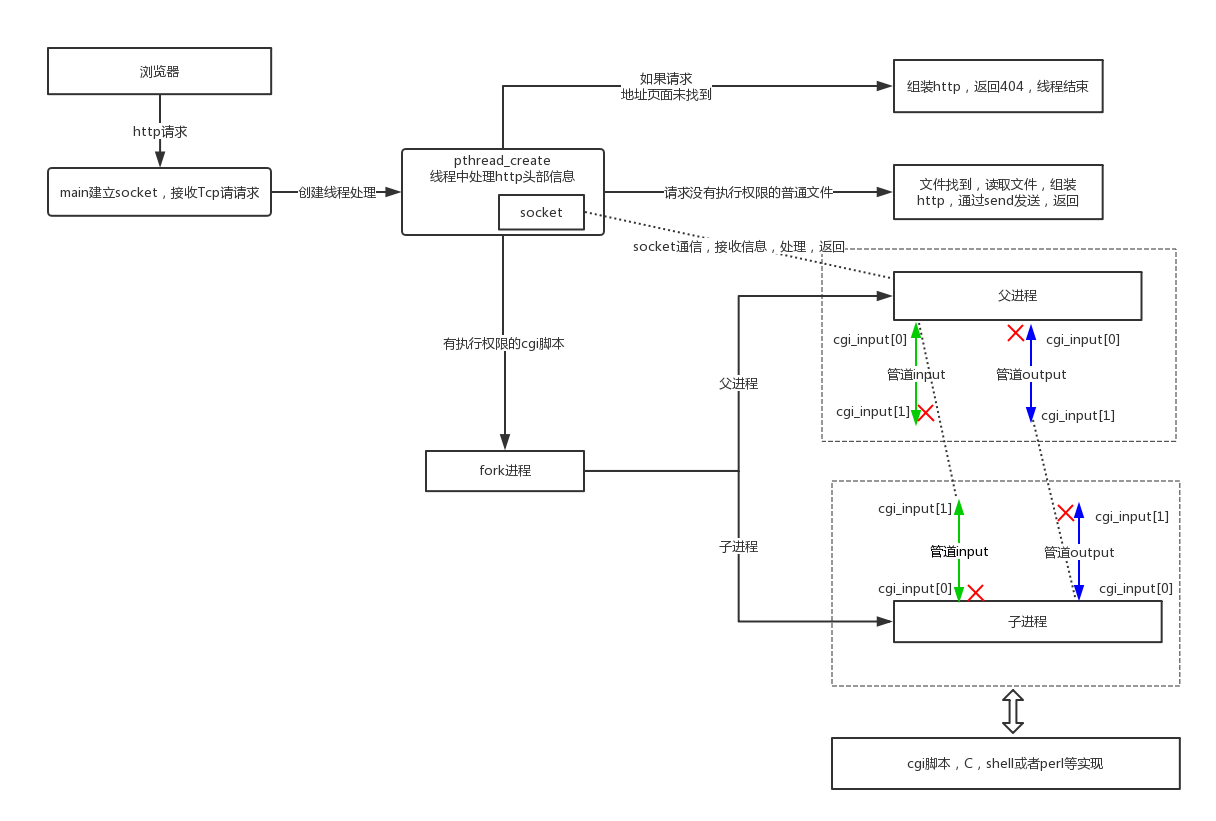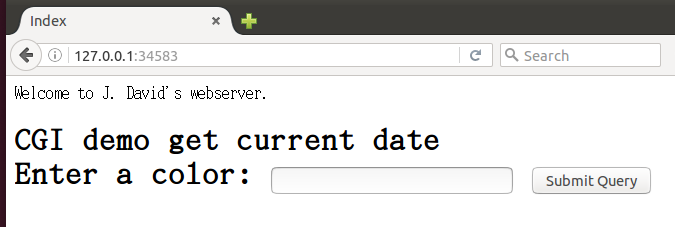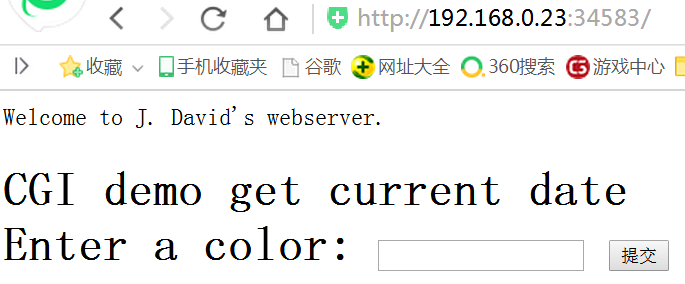共计 16535 个字符,预计需要花费 42 分钟才能阅读完成。
tinyhttpd 是一个不到 500 行的超轻量型 Http Server,用来学习非常不错,可以帮助我们真正理解服务器程序的本质。
看完所有源码,真的感觉有很大收获,无论是 unix 的编程,还是 GET/POST 的 Web 处理流程,都清晰了不少。废话不说,开始我们的 Server 探索之旅。
项目主页:http://sourceforge.net/projects/tinyhttpd/
首先,本人刚刚开始开源代码精读,写的不对的地方,大家轻拍,一起进步。本文是对Tinyhttpd的一次精读,大家每天都在用着http服务,很多人也一直活跃在上层,使用IIS、Apache等,大家是否想看看http服务器大概是怎么运作的,通过一个500多行的源码加上完整的注释,和大家逛一逛http服务器。Tinyhttpd真的非常适合阅读尤其是刚入门的,清晰的代码,简单的makefile…其实有很多分析tinyghttpd的,这边抱着人家写的是人家,自己写的才是自己的态度,写的尽量详细,尽量简单,很多都写在代码注释里面,也把学习中的一些坑翻出来和大家一起读读,吸取将近20年前的大神通过500行代码带给我们的财富。不管你是写c的,或者C#,js亦或java,只要用到http的都欢迎读读。
大家看后如果觉得我有写的不对的地方,欢迎指出~~
附上注解代码的github地址:
https://github.com/nengm/Tinyhttpd
1.首先是一张图 全解了Tinyhttp是如何运作的,我觉得图说明比我用文字描述的要清晰,语言功底不太给力。

2. 主要函数简略说明,代码中进行了详细注释。
main 主函数
startup 绑定监听套接字
accept_request 每次收到请求,创建一个线程来处理接受到的请求
serve_file 接读取文件返回给请求的http客户端
execute_cgi 执行cgi文件
3.注意点
注意点1:
index.html必须没有执行权限,否则看不到内容,并且会产生Program received signal SIGPIPE, Broken pipe,因为程序中如果有可执行权限会当cgi脚本处理。所以假如html有执行权限先把它去除了,chmod 600 index.html
color.cgi、date.cgi必须要有执行权限。
注意点2:
color.cgi是用perl写的,相信大家很少接触了。所以可以引用网上一个简单的例子,换成一个shell写的cgi测试
#!/bin/bash
echo “Content-Type: text/html”
echo
echo “<HTML><BODY>”
echo “<CENTER>Today is:</CENTER>”
echo “<CENTER><B>”
date
echo “</B></CENTER>”
echo “</BODY></HTML>”
4.操作
1.执行make,生成成功,./httpd启动成功。

2.如果在当前linux下的firefox下执行。直接在浏览器中输入

3.在windows中测试,

4.测试执行自带的perl写的cgi脚本

5.进入index2.html页面,测试shell写的cgi脚本。


/* J. David's webserver */
/* This is a simple webserver.
* Created November 1999 by J. David Blackstone.
* CSE 4344 (Network concepts), Prof. Zeigler
* University of Texas at Arlington
*/
/* This program compiles for Sparc Solaris 2.6.
* To compile for Linux:
* 1) Comment out the #include <pthread.h> line.
* 2) Comment out the line that defines the variable newthread.
* 3) Comment out the two lines that run pthread_create().
* 4) Uncomment the line that runs accept_request().
* 5) Remove -lsocket from the Makefile.
*/
#include <stdio.h>
#include <sys/socket.h>
#include <sys/types.h>
#include <netinet/in.h>
#include <arpa/inet.h>
#include <unistd.h>
#include <ctype.h>
#include <strings.h>
#include <string.h>
#include <sys/stat.h>
#include <pthread.h>
#include <sys/wait.h>
#include <stdlib.h>
//宏定义,是否是空格
#define ISspace(x) isspace((int)(x))
#define SERVER_STRING "Server: jdbhttpd/0.1.0\r\n"
//每次收到请求,创建一个线程来处理接受到的请求
//把client_sock转成地址作为参数传入pthread_create
void accept_request(void *arg);
//错误请求
void bad_request(int);
//读取文件
void cat(int, FILE *);
//无法执行
void cannot_execute(int);
//错误输出
void error_die(const char *);
//执行cig脚本
void execute_cgi(int, const char *, const char *, const char *);
//得到一行数据,只要发现c为\n,就认为是一行结束,如果读到\r,再用MSG_PEEK的方式读入一个字符,如果是\n,从socket用读出
//如果是下个字符则不处理,将c置为\n,结束。如果读到的数据为0中断,或者小于0,也视为结束,c置为\n
int get_line(int, char *, int);
//返回http头
void headers(int, const char *);
//没有发现文件
void not_found(int);
//如果不是CGI文件,直接读取文件返回给请求的http客户端
void serve_file(int, const char *);
//开启tcp连接,绑定端口等操作
int startup(u_short *);
//如果不是Get或者Post,就报方法没有实现
void unimplemented(int);
// Http请求,后续主要是处理这个头
//
// GET / HTTP/1.1
// Host: 192.168.0.23:47310
// Connection: keep-alive
// Upgrade-Insecure-Requests: 1
// User-Agent: Mozilla/5.0 (Windows NT 6.1; WOW64) AppleWebKit/537.36 (KHTML, like Gecko) Chrome/55.0.2883.87 Safari/537.36
// Accept: text/html,application/xhtml+xml,application/xml;q=0.9,image/webp,*/*; q = 0.8
// Accept - Encoding: gzip, deflate, sdch
// Accept - Language : zh - CN, zh; q = 0.8
// Cookie: __guid = 179317988.1576506943281708800.1510107225903.8862; monitor_count = 5
//
// POST / color1.cgi HTTP / 1.1
// Host: 192.168.0.23 : 47310
// Connection : keep - alive
// Content - Length : 10
// Cache - Control : max - age = 0
// Origin : http ://192.168.0.23:40786
// Upgrade - Insecure - Requests : 1
// User - Agent : Mozilla / 5.0 (Windows NT 6.1; WOW64) AppleWebKit / 537.36 (KHTML, like Gecko) Chrome / 55.0.2883.87 Safari / 537.36
// Content - Type : application / x - www - form - urlencoded
// Accept : text / html, application / xhtml + xml, application / xml; q = 0.9, image / webp, */*;q=0.8
// Referer: http://192.168.0.23:47310/
// Accept-Encoding: gzip, deflate
// Accept-Language: zh-CN,zh;q=0.8
// Cookie: __guid=179317988.1576506943281708800.1510107225903.8862; monitor_count=281
// Form Data
// color=gray
/**********************************************************************/
/* A request has caused a call to accept() on the server port to
* return. Process the request appropriately.
* Parameters: the socket connected to the client */
/**********************************************************************/
void accept_request(void *arg)
{
//socket
int client = (intptr_t)arg;
char buf[1024];
int numchars;
char method[255];
char url[255];
char path[512];
size_t i, j;
struct stat st;
int cgi = 0; /* becomes true if server decides this is a CGI
* program */
char *query_string = NULL;
//根据上面的Get请求,可以看到这边就是取第一行
//这边都是在处理第一条http信息
//"GET / HTTP/1.1\n"
numchars = get_line(client, buf, sizeof(buf));
i = 0; j = 0;
//第一行字符串提取Get
while (!ISspace(buf[j]) && (i < sizeof(method) - 1))
{
method[i] = buf[j];
i++; j++;
}
//结束
method[i] = '\0';
//判断是Get还是Post
if (strcasecmp(method, "GET") && strcasecmp(method, "POST"))
{
unimplemented(client);
return;
}
//如果是POST,cgi置为1
if (strcasecmp(method, "POST") == 0)
cgi = 1;
i = 0;
//跳过空格
while (ISspace(buf[j]) && (j < sizeof(buf)))
j++;
//得到 "/" 注意:如果你的http的网址为http://192.168.0.23:47310/index.html
// 那么你得到的第一条http信息为GET /index.html HTTP/1.1,那么
// 解析得到的就是/index.html
while (!ISspace(buf[j]) && (i < sizeof(url) - 1) && (j < sizeof(buf)))
{
url[i] = buf[j];
i++; j++;
}
url[i] = '\0';
//判断Get请求
if (strcasecmp(method, "GET") == 0)
{
query_string = url;
while ((*query_string != '?') && (*query_string != '\0'))
query_string++;
if (*query_string == '?')
{
cgi = 1;
*query_string = '\0';
query_string++;
}
}
//路径
sprintf(path, "htdocs%s", url);
//默认地址,解析到的路径如果为/,则自动加上index.html
if (path[strlen(path) - 1] == '/')
strcat(path, "index.html");
//获得文件信息
if (stat(path, &st) == -1) {
//把所有http信息读出然后丢弃
while ((numchars > 0) && strcmp("\n", buf)) /* read & discard headers */
numchars = get_line(client, buf, sizeof(buf));
//没有找到
not_found(client);
}
else
{
if ((st.st_mode & S_IFMT) == S_IFDIR)
strcat(path, "/index.html");
//如果你的文件默认是有执行权限的,自动解析成cgi程序,如果有执行权限但是不能执行,会接受到报错信号
if ((st.st_mode & S_IXUSR) ||
(st.st_mode & S_IXGRP) ||
(st.st_mode & S_IXOTH) )
cgi = 1;
if (!cgi)
//接读取文件返回给请求的http客户端
serve_file(client, path);
else
//执行cgi文件
execute_cgi(client, path, method, query_string);
}
//执行完毕关闭socket
close(client);
}
/**********************************************************************/
/* Inform the client that a request it has made has a problem.
* Parameters: client socket */
/**********************************************************************/
void bad_request(int client)
{
char buf[1024];
sprintf(buf, "HTTP/1.0 400 BAD REQUEST\r\n");
send(client, buf, sizeof(buf), 0);
sprintf(buf, "Content-type: text/html\r\n");
send(client, buf, sizeof(buf), 0);
sprintf(buf, "\r\n");
send(client, buf, sizeof(buf), 0);
sprintf(buf, "<P>Your browser sent a bad request, ");
send(client, buf, sizeof(buf), 0);
sprintf(buf, "such as a POST without a Content-Length.\r\n");
send(client, buf, sizeof(buf), 0);
}
/**********************************************************************/
/* Put the entire contents of a file out on a socket. This function
* is named after the UNIX "cat" command, because it might have been
* easier just to do something like pipe, fork, and exec("cat").
* Parameters: the client socket descriptor
* FILE pointer for the file to cat */
/**********************************************************************/
//得到文件内容,发送
void cat(int client, FILE *resource)
{
char buf[1024];
fgets(buf, sizeof(buf), resource);
//循环读
while (!feof(resource))
{
send(client, buf, strlen(buf), 0);
fgets(buf, sizeof(buf), resource);
}
}
/**********************************************************************/
/* Inform the client that a CGI script could not be executed.
* Parameter: the client socket descriptor. */
/**********************************************************************/
void cannot_execute(int client)
{
char buf[1024];
sprintf(buf, "HTTP/1.0 500 Internal Server Error\r\n");
send(client, buf, strlen(buf), 0);
sprintf(buf, "Content-type: text/html\r\n");
send(client, buf, strlen(buf), 0);
sprintf(buf, "\r\n");
send(client, buf, strlen(buf), 0);
sprintf(buf, "<P>Error prohibited CGI execution.\r\n");
send(client, buf, strlen(buf), 0);
}
/**********************************************************************/
/* Print out an error message with perror() (for system errors; based
* on value of errno, which indicates system call errors) and exit the
* program indicating an error. */
/**********************************************************************/
void error_die(const char *sc)
{
perror(sc);
exit(1);
}
/**********************************************************************/
/* Execute a CGI script. Will need to set environment variables as
* appropriate.
* Parameters: client socket descriptor
* path to the CGI script */
/**********************************************************************/
void execute_cgi(int client, const char *path,
const char *method, const char *query_string)
{
//缓冲区
char buf[1024];
//2根管道
int cgi_output[2];
int cgi_input[2];
//进程pid和状态
pid_t pid;
int status;
int i;
char c;
//读取的字符数
int numchars = 1;
//http的content_length
int content_length = -1;
//默认字符
buf[0] = 'A'; buf[1] = '\0';
//忽略大小写比较字符串
if (strcasecmp(method, "GET") == 0)
//读取数据,把整个header都读掉,以为Get写死了直接读取index.html,没有必要分析余下的http信息了
while ((numchars > 0) && strcmp("\n", buf)) /* read & discard headers */
numchars = get_line(client, buf, sizeof(buf));
else /* POST */
{
numchars = get_line(client, buf, sizeof(buf));
while ((numchars > 0) && strcmp("\n", buf))
{
//如果是POST请求,就需要得到Content-Length,Content-Length:这个字符串一共长为15位,所以
//取出头部一句后,将第16位设置结束符,进行比较
//第16位置为结束
buf[15] = '\0';
if (strcasecmp(buf, "Content-Length:") == 0)
//内存从第17位开始就是长度,将17位开始的所有字符串转成整数就是content_length
content_length = atoi(&(buf[16]));
numchars = get_line(client, buf, sizeof(buf));
}
if (content_length == -1) {
bad_request(client);
return;
}
}
sprintf(buf, "HTTP/1.0 200 OK\r\n");
send(client, buf, strlen(buf), 0);
//建立output管道
if (pipe(cgi_output) < 0) {
cannot_execute(client);
return;
}
//建立input管道
if (pipe(cgi_input) < 0) {
cannot_execute(client);
return;
}
// fork后管道都复制了一份,都是一样的
// 子进程关闭2个无用的端口,避免浪费
// ×<------------------------->1 output
// 0<-------------------------->× input
// 父进程关闭2个无用的端口,避免浪费
// 0<-------------------------->× output
// ×<------------------------->1 input
// 此时父子进程已经可以通信
//fork进程,子进程用于执行CGI
//父进程用于收数据以及发送子进程处理的回复数据
if ( (pid = fork()) < 0 ) {
cannot_execute(client);
return;
}
if (pid == 0) /* child: CGI script */
{
char meth_env[255];
char query_env[255];
char length_env[255];
//子进程输出重定向到output管道的1端
dup2(cgi_output[1], 1);
//子进程输入重定向到input管道的0端
dup2(cgi_input[0], 0);
//关闭无用管道口
close(cgi_output[0]);
close(cgi_input[1]);
//CGI环境变量
sprintf(meth_env, "REQUEST_METHOD=%s", method);
putenv(meth_env);
if (strcasecmp(method, "GET") == 0) {
sprintf(query_env, "QUERY_STRING=%s", query_string);
putenv(query_env);
}
else { /* POST */
sprintf(length_env, "CONTENT_LENGTH=%d", content_length);
putenv(length_env);
}
//替换执行path
execl(path, path, NULL);
//int m = execl(path, path, NULL);
//如果path有问题,例如将html网页改成可执行的,但是执行后m为-1
//退出子进程,管道被破坏,但是父进程还在往里面写东西,触发Program received signal SIGPIPE, Broken pipe.
exit(0);
} else { /* parent */
//关闭无用管道口
close(cgi_output[1]);
close(cgi_input[0]);
if (strcasecmp(method, "POST") == 0)
for (i = 0; i < content_length; i++) {
//得到post请求数据,写到input管道中,供子进程使用
recv(client, &c, 1, 0);
write(cgi_input[1], &c, 1);
}
//从output管道读到子进程处理后的信息,然后send出去
while (read(cgi_output[0], &c, 1) > 0)
send(client, &c, 1, 0);
//完成操作后关闭管道
close(cgi_output[0]);
close(cgi_input[1]);
//等待子进程返回
waitpid(pid, &status, 0);
}
}
/**********************************************************************/
/* Get a line from a socket, whether the line ends in a newline,
* carriage return, or a CRLF combination. Terminates the string read
* with a null character. If no newline indicator is found before the
* end of the buffer, the string is terminated with a null. If any of
* the above three line terminators is read, the last character of the
* string will be a linefeed and the string will be terminated with a
* null character.
* Parameters: the socket descriptor
* the buffer to save the data in
* the size of the buffer
* Returns: the number of bytes stored (excluding null) */
/**********************************************************************/
//得到一行数据,只要发现c为\n,就认为是一行结束,如果读到\r,再用MSG_PEEK的方式读入一个字符,如果是\n,从socket用读出
//如果是下个字符则不处理,将c置为\n,结束。如果读到的数据为0中断,或者小于0,也视为结束,c置为\n
int get_line(int sock, char *buf, int size)
{
int i = 0;
char c = '\0';
int n;
while ((i < size - 1) && (c != '\n'))
{
n = recv(sock, &c, 1, 0);
/* DEBUG printf("%02X\n", c); */
if (n > 0)
{
if (c == '\r')
{
//偷窥一个字节,如果是\n就读走
n = recv(sock, &c, 1, MSG_PEEK);
/* DEBUG printf("%02X\n", c); */
if ((n > 0) && (c == '\n'))
recv(sock, &c, 1, 0);
else
//不是\n(读到下一行的字符)或者没读到,置c为\n 跳出循环,完成一行读取
c = '\n';
}
buf[i] = c;
i++;
}
else
c = '\n';
}
buf[i] = '\0';
return(i);
}
/**********************************************************************/
/* Return the informational HTTP headers about a file. */
/* Parameters: the socket to print the headers on
* the name of the file */
/**********************************************************************/
//加入http的headers
void headers(int client, const char *filename)
{
char buf[1024];
(void)filename; /* could use filename to determine file type */
strcpy(buf, "HTTP/1.0 200 OK\r\n");
send(client, buf, strlen(buf), 0);
strcpy(buf, SERVER_STRING);
send(client, buf, strlen(buf), 0);
sprintf(buf, "Content-Type: text/html\r\n");
send(client, buf, strlen(buf), 0);
strcpy(buf, "\r\n");
send(client, buf, strlen(buf), 0);
}
/**********************************************************************/
/* Give a client a 404 not found status message. */
/**********************************************************************/
//如果资源没有找到得返回给客户端下面的信息
void not_found(int client)
{
char buf[1024];
sprintf(buf, "HTTP/1.0 404 NOT FOUND\r\n");
send(client, buf, strlen(buf), 0);
sprintf(buf, SERVER_STRING);
send(client, buf, strlen(buf), 0);
sprintf(buf, "Content-Type: text/html\r\n");
send(client, buf, strlen(buf), 0);
sprintf(buf, "\r\n");
send(client, buf, strlen(buf), 0);
sprintf(buf, "<HTML><TITLE>Not Found</TITLE>\r\n");
send(client, buf, strlen(buf), 0);
sprintf(buf, "<BODY><P>The server could not fulfill\r\n");
send(client, buf, strlen(buf), 0);
sprintf(buf, "your request because the resource specified\r\n");
send(client, buf, strlen(buf), 0);
sprintf(buf, "is unavailable or nonexistent.\r\n");
send(client, buf, strlen(buf), 0);
sprintf(buf, "</BODY></HTML>\r\n");
send(client, buf, strlen(buf), 0);
}
/**********************************************************************/
/* Send a regular file to the client. Use headers, and report
* errors to client if they occur.
* Parameters: a pointer to a file structure produced from the socket
* file descriptor
* the name of the file to serve */
/**********************************************************************/
//如果不是CGI文件,直接读取文件返回给请求的http客户端
void serve_file(int client, const char *filename)
{
FILE *resource = NULL;
int numchars = 1;
char buf[1024];
//默认字符
buf[0] = 'A'; buf[1] = '\0';
while ((numchars > 0) && strcmp("\n", buf)) /* read & discard headers */
numchars = get_line(client, buf, sizeof(buf));
resource = fopen(filename, "r");
if (resource == NULL)
not_found(client);
else
{
headers(client, filename);
cat(client, resource);
}
fclose(resource);
}
/**********************************************************************/
/* This function starts the process of listening for web connections
* on a specified port. If the port is 0, then dynamically allocate a
* port and modify the original port variable to reflect the actual
* port.
* Parameters: pointer to variable containing the port to connect on
* Returns: the socket */
/**********************************************************************/
int startup(u_short *port)
{
int httpd = 0;
struct sockaddr_in name;
httpd = socket(PF_INET, SOCK_STREAM, 0);
if (httpd == -1)
error_die("socket");
memset(&name, 0, sizeof(name));
name.sin_family = AF_INET;
name.sin_port = htons(*port);
name.sin_addr.s_addr = htonl(INADDR_ANY);
//绑定socket
if (bind(httpd, (struct sockaddr *)&name, sizeof(name)) < 0)
error_die("bind");
//如果端口没有设置,提供个随机端口
if (*port == 0) /* if dynamically allocating a port */
{
socklen_t namelen = sizeof(name);
if (getsockname(httpd, (struct sockaddr *)&name, &namelen) == -1)
error_die("getsockname");
*port = ntohs(name.sin_port);
}
//监听
if (listen(httpd, 5) < 0)
error_die("listen");
return(httpd);
}
/**********************************************************************/
/* Inform the client that the requested web method has not been
* implemented.
* Parameter: the client socket */
/**********************************************************************/
//如果方法没有实现,就返回此信息
void unimplemented(int client)
{
char buf[1024];
sprintf(buf, "HTTP/1.0 501 Method Not Implemented\r\n");
send(client, buf, strlen(buf), 0);
sprintf(buf, SERVER_STRING);
send(client, buf, strlen(buf), 0);
sprintf(buf, "Content-Type: text/html\r\n");
send(client, buf, strlen(buf), 0);
sprintf(buf, "\r\n");
send(client, buf, strlen(buf), 0);
sprintf(buf, "<HTML><HEAD><TITLE>Method Not Implemented\r\n");
send(client, buf, strlen(buf), 0);
sprintf(buf, "</TITLE></HEAD>\r\n");
send(client, buf, strlen(buf), 0);
sprintf(buf, "<BODY><P>HTTP request method not supported.\r\n");
send(client, buf, strlen(buf), 0);
sprintf(buf, "</BODY></HTML>\r\n");
send(client, buf, strlen(buf), 0);
}
/**********************************************************************/
int main(void)
{
int server_sock = -1;
u_short port = 0;
int client_sock = -1;
struct sockaddr_in client_name;
//这边要为socklen_t类型
socklen_t client_name_len = sizeof(client_name);
pthread_t newthread;
server_sock = startup(&port);
printf("httpd running on port %d\n", port);
while (1)
{
//接受请求,函数原型
//#include <sys/types.h>
//#include <sys/socket.h>
//int accept(int sockfd, struct sockaddr *addr, socklen_t *addrlen);
client_sock = accept(server_sock,
(struct sockaddr *)&client_name,
&client_name_len);
if (client_sock == -1)
error_die("accept");
/* accept_request(client_sock); */
//每次收到请求,创建一个线程来处理接受到的请求
//把client_sock转成地址作为参数传入pthread_create
if (pthread_create(&newthread, NULL, (void *)accept_request, (void *)(intptr_t)client_sock) != 0)
perror("pthread_create");
}
close(server_sock);
return(0);
}
